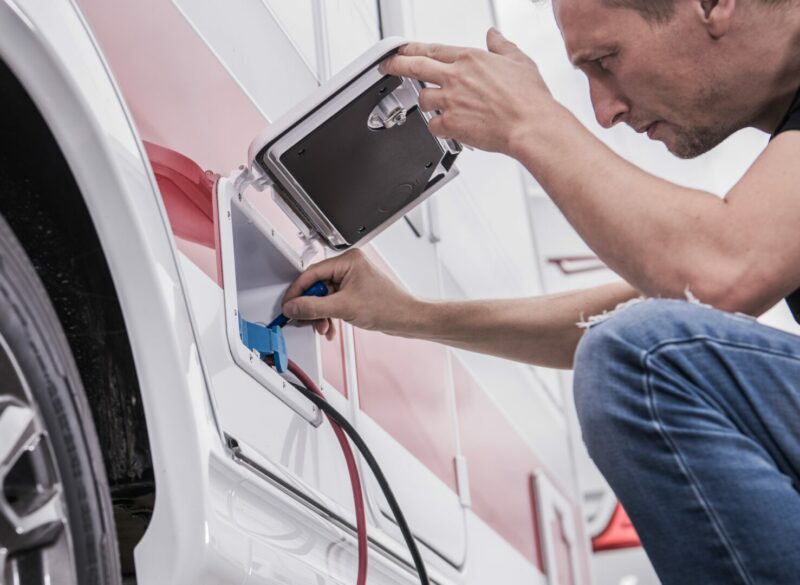Table of Contents Show
Owning an RV will likely turn you into a jack of all trades. Most of the time, it’s far easier and less frustrating to fix an issue yourself than to tow it back to the dealership. However, it’s essential to know your limitations and when you need to let a professional handle a project.
Today, we want to provide you with our RV wiring for dummies guide to help you address fundamental issues in your RV’s electrical system. Let’s get started.
How Is an RV Wired?
Powering your RV may only require that you connect a power cable to your RV and then plug it into an electrical outlet. However, you’ll find a whole lot more taking place inside your RV’s electrical system.
The underbelly, flooring, and walls do a great job concealing hundreds of feet of wiring that run throughout your RV. These cables transfer power to your appliances. Typical RV electrical systems send energy to a converter/charger, which then sends power to the battery bank and the rest of your electrical system.
RVs typically use AC and DC power to run the entire electrical system. DC (direct current) power flows one way. If you power electronics using your RV’s battery, you’ll use DC power. RVs use these DC 12V systems for lights, fans, and even USB ports.
The other type of power, AC (alternating current), flows in different directions. AC currents in the U.S. can change directions up to 60 times per second.
It moves fast and works great for running high-powered electronics like microwaves, air conditioners, and other power-hungry appliances. The electrical outlets in your RV will require AC power, and so you’ll likely need to use a generator or connect to shore power to use them.
Pro Tip: Looking to stock up on some power cords? Discover Everything You Need to Know About RV Power Cords.
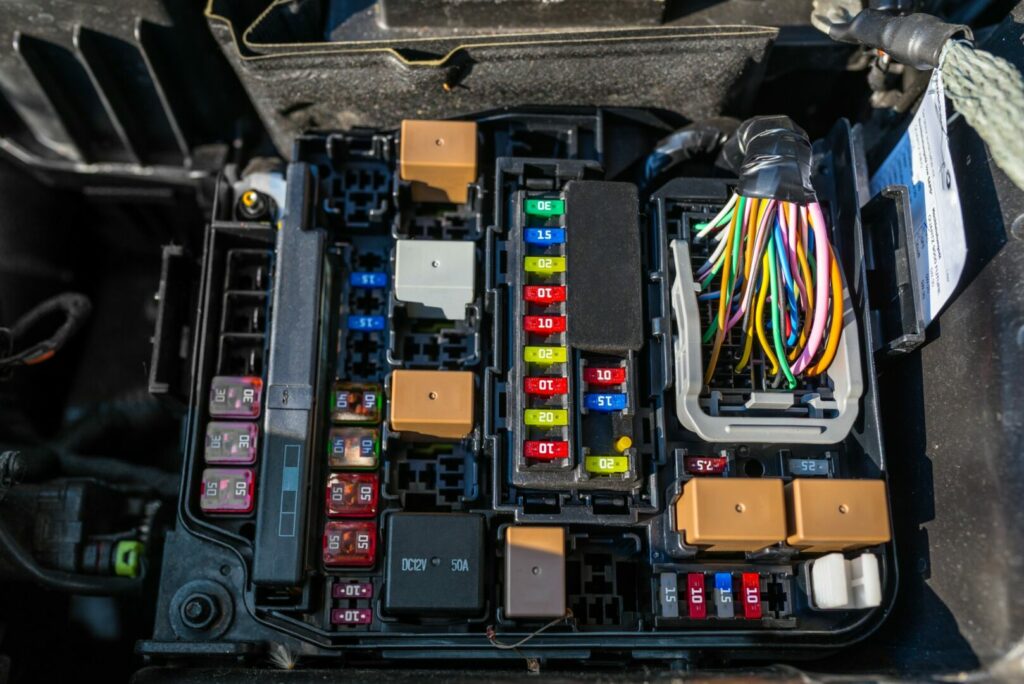
How Does the Electrical System Work in an RV?
To understand RV wiring for dummies you’ll want to know how the electrical system works. The large power cable that connects your RV to shore power sends 120V power to your RV’s breaker panel.
The breaker panel then distributes it to your RV’s converter. This allows you to charge your batteries and use all the outlets and appliances while plugged into shore power.
However, once you unplug your RV, you’ll only have access to the DC-side of your electrical system. This will typically power the bare necessities, like the water pump, lights, and fans. Depending on your needs and battery bank, you may not need much more than this for short trips or overnight stays.
Are RV Outlets the Same as House Outlets?
RV outlets may look like house outlets, but they function very differently behind the cover. RVs have shallow walls, which forces manufacturers to use a different approach for electrical connections.
This often results in less wire contact, increases resistance, and increases the RV outlet’s risk of overload. This is why you must watch your power usage and avoid pushing the outlets to the max.
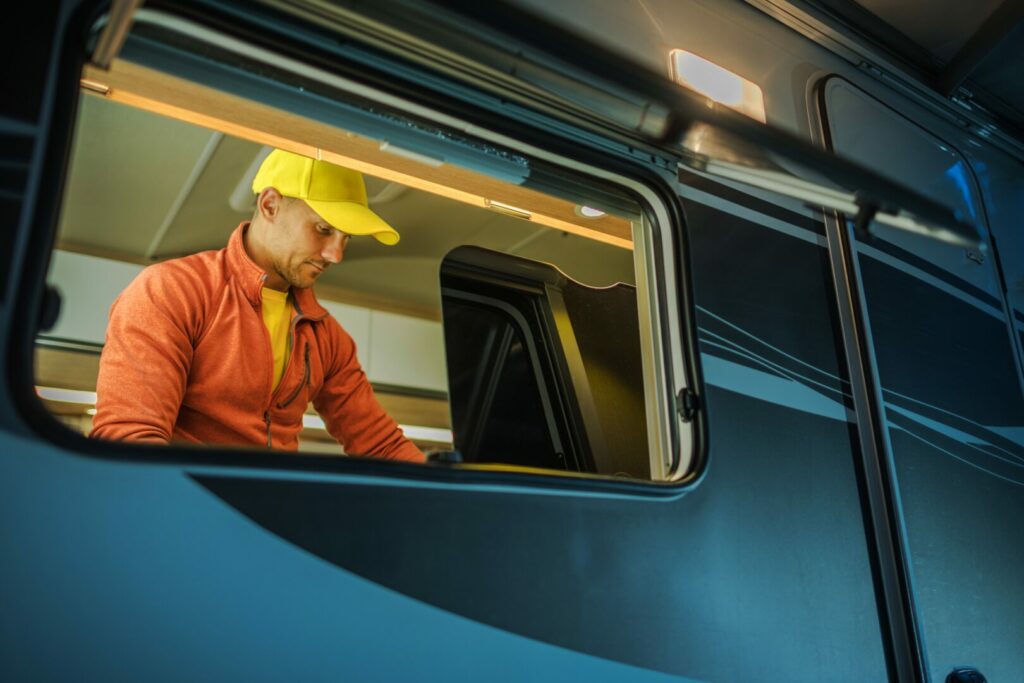
What Color Is the Hot Wire in an RV?
Our RV wiring for dummies guide includes understanding what color is the hot wire. A hot wire is a cable that always carries the electrical current. The National Electrical Code (NEC) recognizes black as the hot wire in RVs and many other applications.
The NEC sets the standards for the widely-adopted codes for installing electrical components and systems to ensure consistency across the board.
What’s the Difference Between an Inverter and a Converter
The terms inverter and converter often get misused in the RV community. This is often because some devices work as inverters and converters, but that’s not always the case.
An inverter takes the 12V DC power stored in your RV’s battery bank and converts it to 120V AC power. An inverter allows your battery bank to run appliances that require 120V.
On the other hand, a converter changes the AC power to DC power. It reduces the 120V alternating current to a 12V direct current. This sends power to all 12V appliances and keeps your battery bank charged when plugged into shore power.
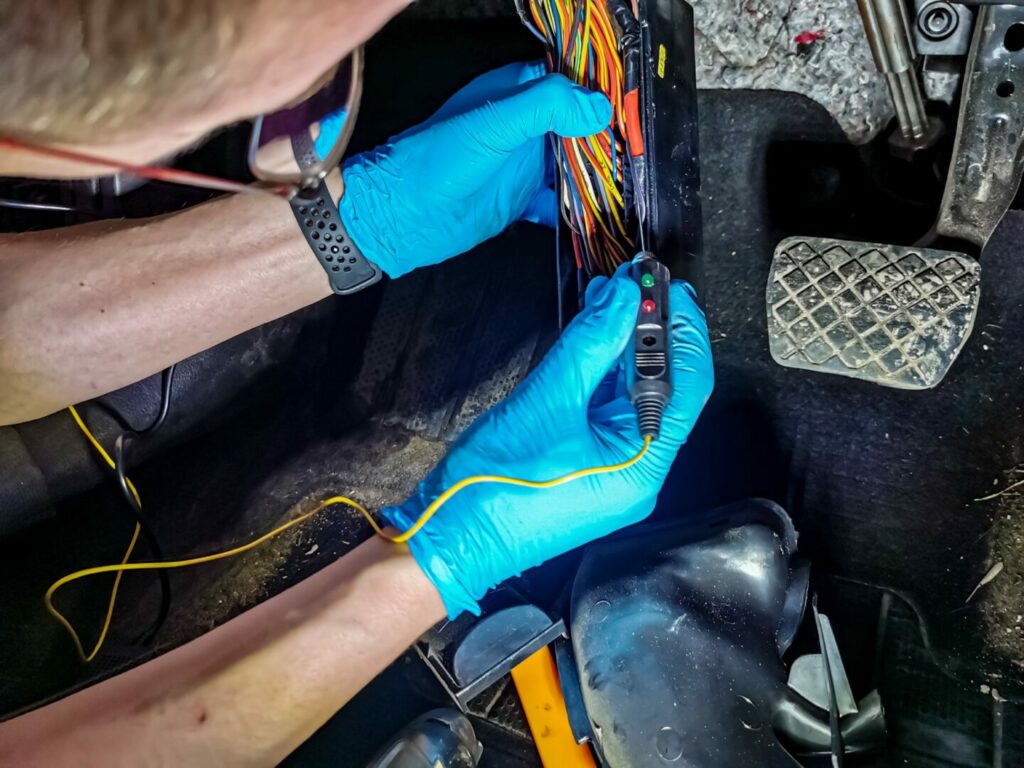
How Is an RV Electrical Panel Wired?
Knowing how an RV electrical panel is wired is an important step in our RV wiring for dummies guide.
RV electrical panels typically combine the AC and DC currents in a junction box. You’ll typically find it located in an obscure place, but it houses the fuses and all of the breakers for an RV’s electrical system. The right side of the box houses the DC (12V system), and the left side has the AC (120V system).
On the DC side of the panel, the positive and negative wires running from the RV’s battery will connect to the circuit board. This provides power to the DC panel and all of the fuse holders.
Each of the 12V appliances in the RV will connect to a specific spot on the board. Make sure to label each appliance’s connection to help identify any blown fuses.
The AC side will include ground, neutral, and positive connections. The green wire is the ground, the white is the neutral line, and the black is positive. It will have a breaker to help protect the circuit from overcurrent or overloads.
Each 120V circuit in your RV has a breaker. You could have multiple outlets or appliances on a circuit. So if a breaker trips to protect the system, it may shut down several outlets or appliances.
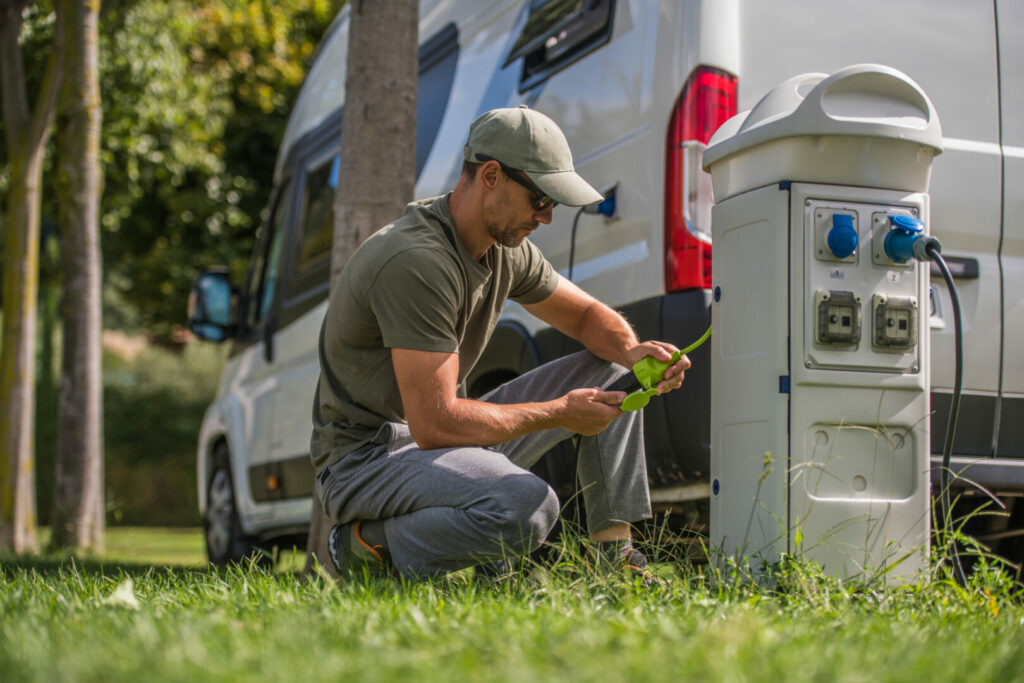
How Is a 12-Volt RV Wired?
A 12V system uses a 12V battery or two 6V batteries wired together to power a portion of your RV. Coming off the battery’s positive side, you will see a fuse to protect the system from any potential issues. It’s better to blow a fuse than to fry your entire system or start a fire.
On the negative side of the battery, you’ll have ground blocks. These will organize this portion and run from the battery to the negative side of all of your 12V appliances.
The positive wires will then run through an isolator switch or a battery disconnect. This can help kill the 12V power to the RV. The positive lines meet the negative ones at the 12V fuse box. If a fuse anywhere in the line blows, the system will not work.
Pro Tip: Unsure what battery type is right for you? Join the debate between 12 Volt of 6 Volt RV Battery: Which is Better?
How Many Amps Does a Standard RV Need?
It is most common to find RVs that have 30-amp electrical systems. However, larger RVs with multiple air conditioners often require 50-amp service. A 30-amp RV can typically handle up to 3,600W, while a 50-amp RV bumps you up to 12,000W.
While you may need to manage your power usage when using a 30-amp service, the step up to 50-amp gives a tremendous amount of freedom. Even with running multiple air conditioners, you will likely have difficulty maxing out the connection with your RV.
Is Working on Your RV Wiring and Electrical on Your Own Worth It?
Hopefully, this RV wiring for dummies guide will shed some light on your rig’s electrical system. However, fixing issues that occur is another story. Hiring a professional to work on your RV’s wiring and electrical system can get expensive.
On the other hand, hospital bills or a funeral can be more costly and devastating. Hiring a professional is strongly advised if you don’t know what you’re doing. Making a small mistake while working on your RV’s electrical system can cause injury or damage your RV. Do you feel confident enough to do your wiring or electrical work?




